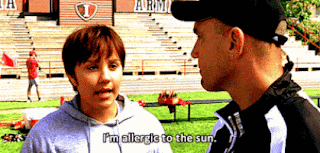1. What media message am I constructing/ sharing/ liking?
Usually pictures of food, people, or things I relate to as a
teenager/ student.
2. What is the purpose of my message?
Picture 1: To show off like “Oooh look at this~ I made her
clothes and the blanket. Ha. My niece is also adorable.” J
Picture 2: To let people know what place the food I posted
is at.
Picture 3: To share how much I can relate to the video as a
student.
3. What am I promoting? Whose voice am I amplifying and
whose voice am I muting?
The baby clothes and blanket I knitted myself, the food I
ate at a restaurant, and a short video/ gif of how I relate to the cartoon
character. I’m amplifying my own voice by showing how good and skilled I am at knitting and how good the food I'm eating is, also the voice of many students that can relate to how they feel when they are studying or listening to teachers give lectures. I don't think I'm muting anyone's voices.
4. Have I given the construction and dissemination of this
message judicious and careful thought?
I can say that I did because I didn’t say post anything that
I know would make mu future-self regret what I posted on social media.
5. Will the media messages that I have constructed and
disseminated possibly harm anyone or myself?
No, my posts don't harm anyone because people love babies (Who would hate babies??)
 |
| (Even Obama loves babies) |
They love food (We’d all die without it. Obviously.) #FoodIsLife.
 |
| (Yasss Zac Efron. YAAAS.) |
Also people
like memes they relate to (C’mon it’s really funny and so relatable. It’s hard
to resist posting it on social media no matter how corny or stupid the post may be.)
 |
| (Making up any excuse just to not go to P.E. class) |
6. What values am I promoting or censuring?
No values really. Just posting for fun. J





























